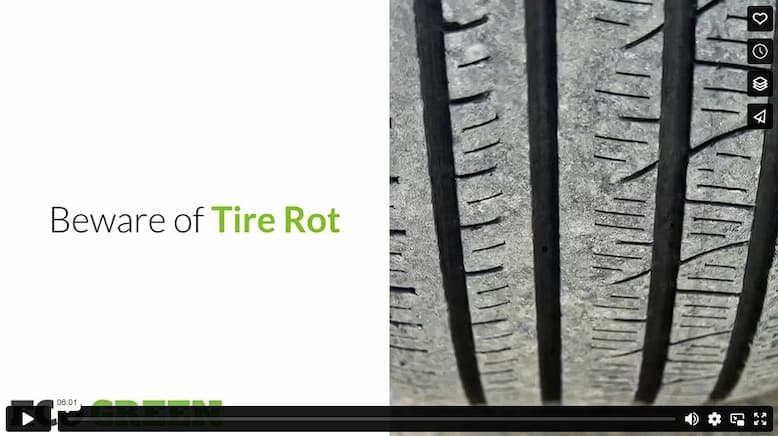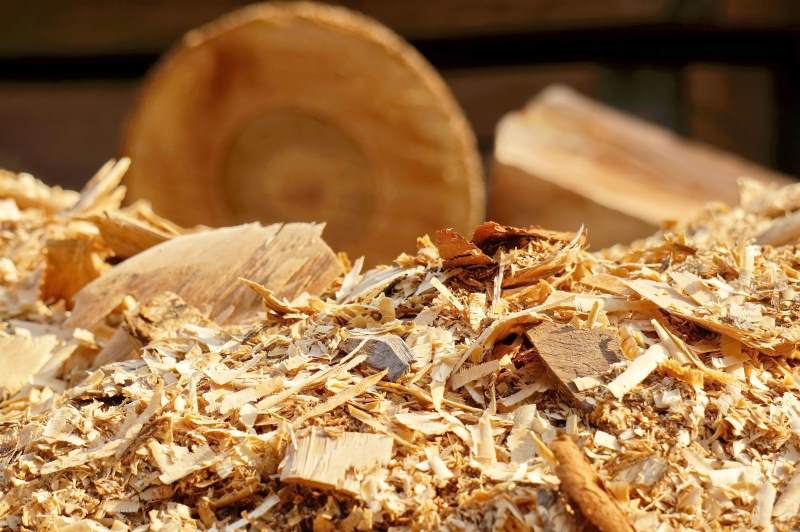It is no secret that rubber does not last forever. You have probably observed the effects of aging rubber in one form or another. You may have seen an old rubber band crack and snap, or your mechanic may have told you that a rubber gasket on your car has failed, creating a leak. Over time, rubber develops what many call dry rot. This is common with tires. The layers of the rubber dry out, causing them to crack and separate. These layers that typically flex easily with the tire bars are no longer flexible and break instead of bending.
To understand what causes the tire rot, it is necessary to understand more about the rubber from which they are made. As you might already know, natural rubber is made from the natural latex of the rubber tree. However, these trees do not produce nearly enough rubber to meet our needs. Synthetic rubber, which is made by stringing together short chains of petroleum products, can be produced in abundance. It also contains additives to enhance its properties. Carbon black is added to give tires their black color, and heat stabilizers are added to increase tires’ ability to hold up to intense summer heat. These enhancements make it a superior product for making tires.
Tire rot occurs as a result of several different environmental conditions.
- Exposure to Oxygen – Oxygen reacts with the long-chain polymers in the rubber, causing an oxidation reaction that breaks down these chains. Thus, the day that a tire is made, it begins aging as it is exposed to oxygen in the tire shop. Once the tire is mounted on a car and filled with compressed air, the tire’s internal oxygen concentration and air pressure also increase. The combination of these conditions leads to a faster rate of deterioration. Tire manufacturers attempt to mitigate some of this effect by installing butyl rubber liners inside tires. This rubber is more impermeable to oxygen and acts as a protective barrier to the rest of the tire.
- Ultraviolet Radiation – We all know that the sun can burn our skin or cause a car’s paint job to crack and peel prematurely. What you may not know is that the sun’s rays can contribute to the breakdown of the rubber in your tires. This damage appears as cracks in the side walls.
- Exposure to Heat – At higher temperatures, the rubber and oxygen in the tires react more quickly. Hot rubber is more permeable and reacts more rapidly with the surrounding air. Thus, the tires on cars in much warmer climates will have a shorter useful life than those in more temperate areas.
- Long Term Storage – From time to time, it is necessary to put a car into storage for a time, as many people did during the pandemic. Tires, however, do not fare well when they sit for a long time. Driving a car naturally causes flexing and bending in the rubber tires. This movement helps to redistribute oils within the rubber. These oils keep the rubber from becoming stiff and brittle and ultimately extend the life of your tire.
When do tires expire?
In recent years there has been some debate over the actual life span of a tire. While advances in manufactured synthetic rubber have come a long way in making tires last longer. The fact remains that tires begin breaking down from the moment that they are made.
In 1990, several car manufacturers added warnings to their owner’s manuals telling customers that tires older than six years should only be used in emergencies. This statement includes spare tires. Often stored in the trunk of a sedan, these tires can be exposed to excessive heat and wear out despite never being used.
In 2005, the tire manufacturer, Bridgestone, issued statements telling customers that tires should be inspected after five years and replaced after 10 years. Other manufacturers, such as Michelin, Hankook, and Continental, followed suit soon after. These comments indicate that there is more to consider when determining a tire’s life span than the number of miles it has traveled.
Currently, the only way to determine a tire’s age is to look it up by the Tire Identification Number (TIN). Some believe that the manufacture date should be clearly stamped on each tire when it rolls out of the manufacturing plant. This additional information could help installers and customers alike make informed decisions about the safety of the tires they install on each vehicle.
Recycle, Recycle, Recycle
Given what we know about the deterioration of synthetic rubber tires over time, it seems clear that recycling is the best use for end of life tires. By the time a tire is spent, the rubber has lost the flexibility that it once had. Instead, it is brittle. The rubber and metal layers are prone to separation and failure. It is no longer safe to put back on the road. The better option is breaking down the tire into crumb or powder rubber in a tire recycling plant. This option creates a product that can be used in many different applications without any worry of further structural failure.
At ECO Green, we’re committed to innovative solutions for tire recycling. We offer both turnkey systems and integrated equipment that allow companies to recycle tires in a more efficient, eco-friendly way. Contact ECO Green to find out how we help break down tires of all sizes into shreds, crumb, and powder rubber for use in valuable aftermarkets, including athletic fields, playground surfaces, and more.
Video





